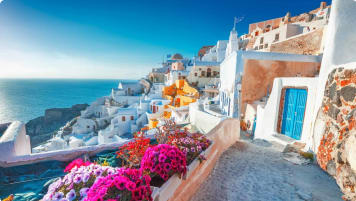A History of Ancient Rhodes
The East Mediterranean island of Rhodes is part of the ancient history of Europe. This article for senior couples and mature solo travellers on a small group tour, provides a platform for the ancient cities of the Mediterranean and the network of empires crossing the Mediterranean.
8 May 22 · 7 mins read

Ancient Rhodes History
Rhodes, the capital of the Greek Dodecanese islands in the South Aegean Sea region, has served as an important centre of civilisation since the 5th century BCE. Inhabited since the Stone Age, in ancient history it was occupied by the Minoan, Mycenean, and Dorian civilizations, before prospering as a great commercial and maritime power of its own. Strategically located between east and west, at its peak the island controlled trade and maintained law and peace throughout the Aegean Sea.
This article explores the history of the Greek island Rhodes from the prehistoric era to Roman times, intended as background reading for Odyssey Traveller’s 21-day Eastern Mediterranean Islands Tour. This involves a guided tour of Rhodes Island, where visitors enjoy an itinerary of such Rhodes highlights as the ancient cities of Ialysos, Kamiros, Lindus, and their archaeological sites; the Acropolis of Rhodes; the temple to Athena; the Valley of the Butterflies; the fortified Grand Master Palace of the Knights of Rhodes; the Rhodes old town medieval city and its narrow streets; and the impressive Rhodes Archaeological Museum.
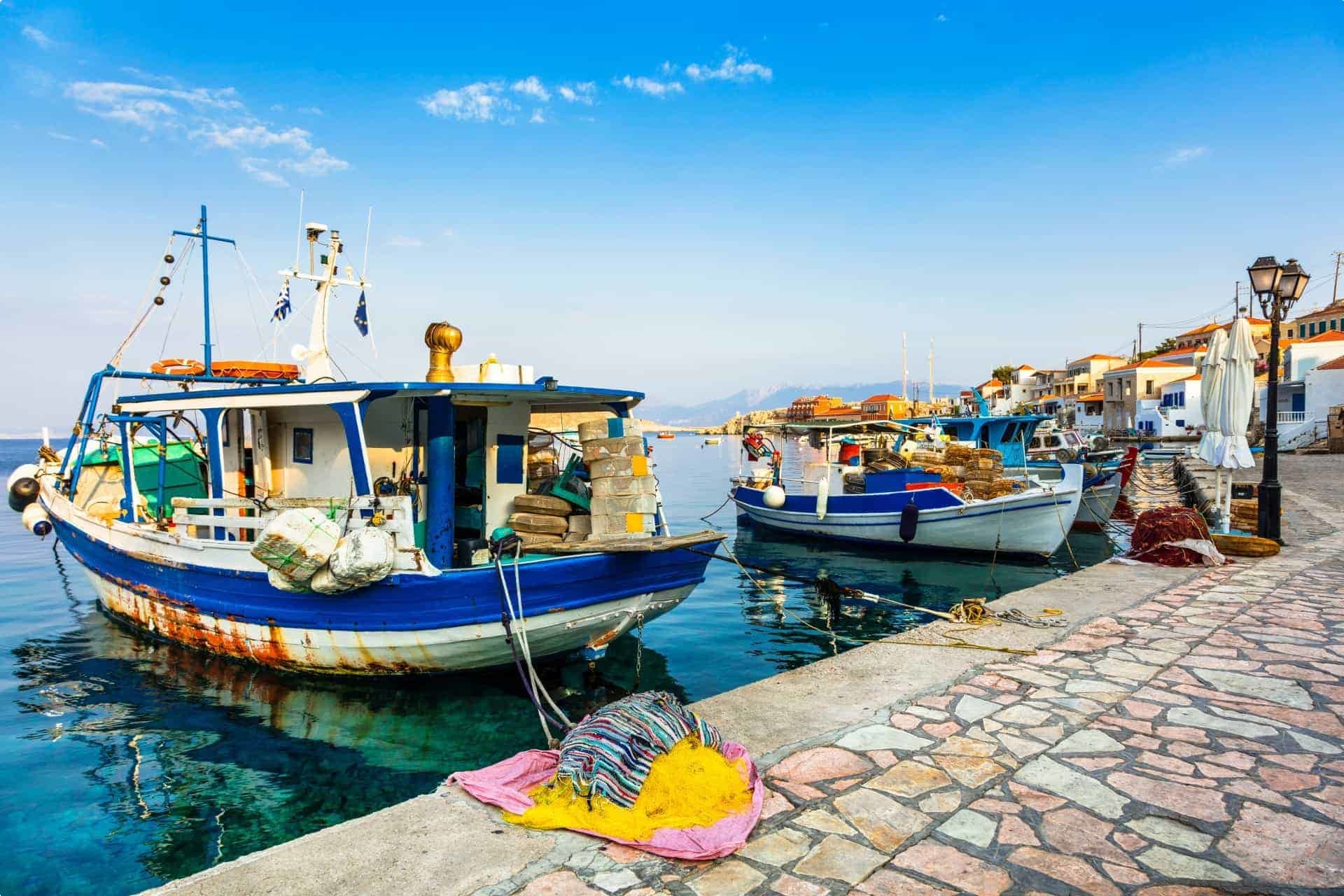
Prehistory
The first inhabitants of Rhodes arrived in the Neolithic period, having migrated from Asia Minor. Concrete remains of this early civilisation can be found on the north-west coast of the island at the prehistoric site of Trianda (Ialysos). However, little much else remains of this culture.
The Minoans followed to settle the island in the 16th century BCE. Under them Rhodes became an important trading centre, with links back to the hub of the Minoan civilisation based on Crete. Cretan measuring weights, script, pottery, fresco designs, and architecture all discovered on Rhodes attest to the trade and cultural links between the two islands during this era.
Mycenean Civilization
For many centuries the Minoans lived peacefully on the island. That is until the Myceneans invaded in the 14th century BCE, spreading their civilisation from its base in mainland Greece. Whereas the Minoans had stayed on the coastlines of the island, the Myceneans advanced more inland, established a number of settlements fortified by hills.
Archaeological finds, included pottery and jewellery, are displayed today at the Archaeological Museum of Rhodes as evidence of the presence of Mycenean culture. The peoples’ rock-cut tombs, arranged in rows and topped by larked marker stones, have also been discovered. Dedications unearthed within such tombs, including gold, silver, and glass objects, suggest this Mycenean period was a prosperous one.
Indeed, Rhodes grew to be a powerful state during this era, spreading its influence via extensive trade networks. The presence of Egyptian scarabs and Cypriot seals from this time attest to the extent of its trade and influence.
The Dorians
Following the collapse of the Mycenean civilisation in approximately 1200 BCE, the Dorians were next to arrive in Rhodes. Settling around the 10th century BCE, they divided the island into three sections based around the main cities of Lindus (in the south-east), Ialysus (in the north-east), and Kamiros (in the north-west).
With them, the Dorians brought their dialect, political organisation, customs, and traditions, which all greatly influenced the development of Rhodes. They also built many temples and structures; some, including the Acropolis of Rhodes, still remain today.
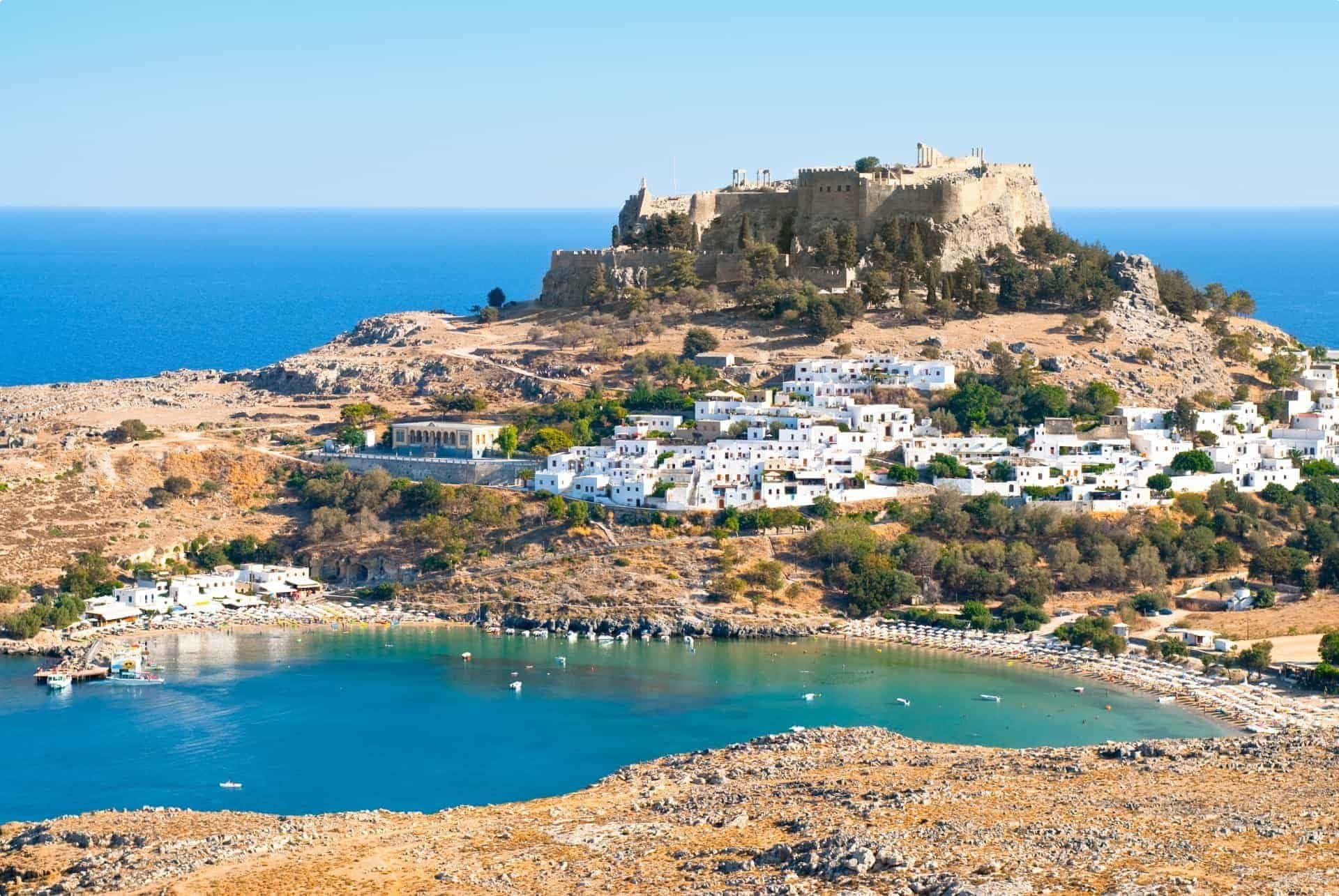
Due to its strategic geographic position, Rhodes quickly became a wealthy commercial centre during the Dorian era. Serving as a staging post and a safe anchorage, it linked markets all around the Mediterranean, with Rhodian ships bringing home riches of all sorts. Its three cities in turn grew immensely powerful, soon spreading outwards to colonise many areas along the west coast of Asia Minor, Sicily, France, and Spain. These three cities later united with three other Doric cities – Kos, Knidos, and Halicarnassus – to form a six-city federation known as the Dorian Hexapolis.
Classical Greece
Extensive warfare during the 5th century BCE caused a great deal of changes for Rhodes. For a short period from 490 BCE the island came under Persian rule, following their invasion of Greece. The Athenians, however, were able to push back the Persians, defeating them in 478 BCE. With this, Rhodes joined the Delian League under the leadership of Athens.
Despite being a member of the league, the island largely remained neutral through when the Peloponnesian War began between Athens and Sparta. Eventually, however, it sided with Sparta, revolting against Athens in 412 BCE.
Shortly afterwards, in 408 BCE, Rhodes’ three cities united to form one territory and founded a new capital on the northern tip of the island – the modern-day Rhodes city. The city was built according to the plans of the ancient Greek architect and urban planner Hippodamus, with straight roads which crossed each other at right angles. It soon came to be considered the most beautiful city in the world, filled with grand public buildings, temples, and theatres, and adorned with many great works of art.
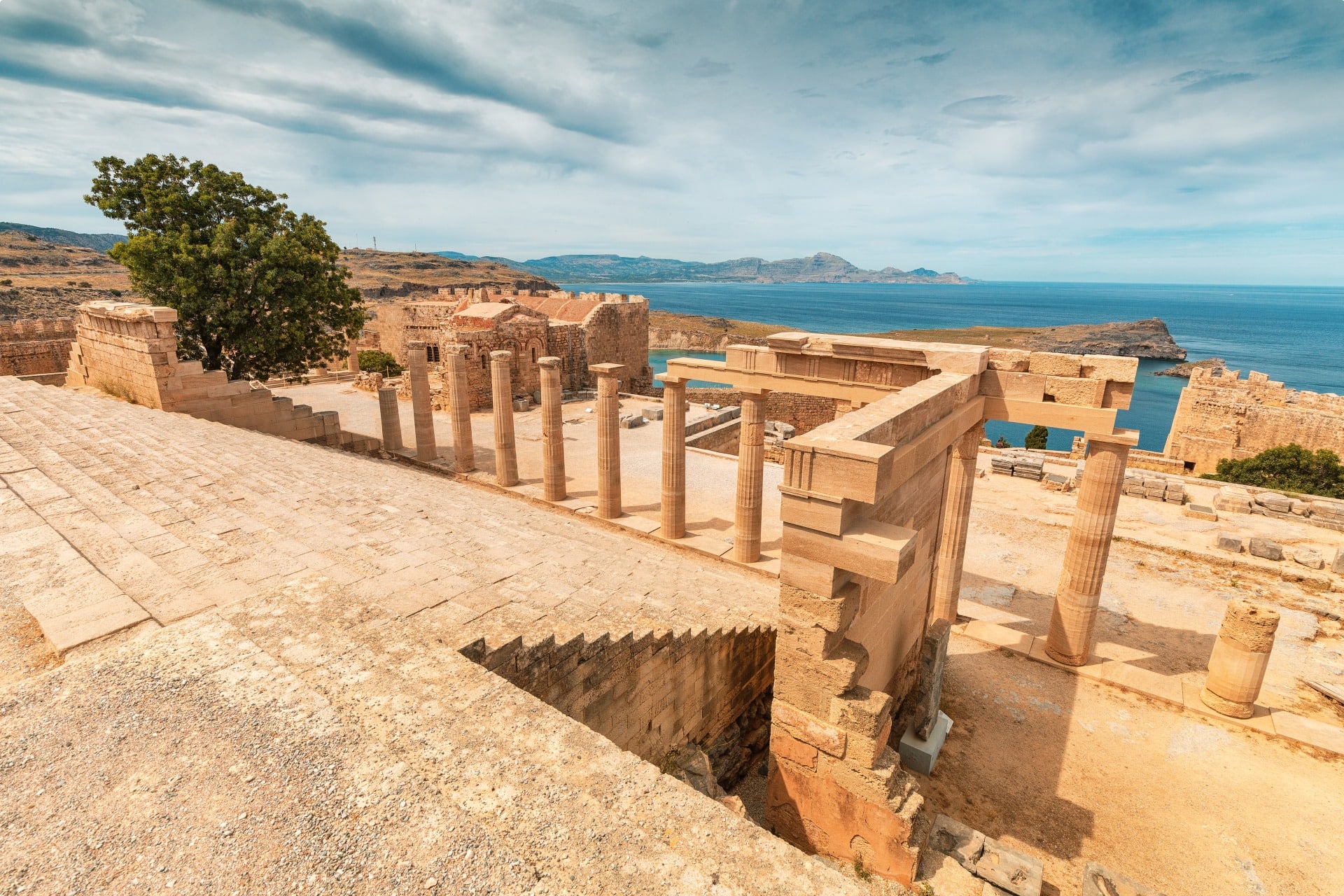
Influence over the island continued to vary in the fourth century. Initially, Rhodes ended its loyalty to Sparta in 395 BCE, establishing a form of democracy. However, it then briefly came under the influence of Athens in 378 BCE, joining the Second Athenian Confederacy.
Then in 357 BCE, the island was conquered by King Mausolus of Caria in Western Anatolia, before falling again to the Persians in 340 BCE. However, yet again this rule was a short one, with the Persians defeated by Alexander the Great in 332 BCE, who in turn made Rhodes part of his own empire.
Hellenistic Period
Upon his death in 323 BCE, Alexander the Great’s empire was divided up amongst three of his generals – Ptolemy, Seleucus and Antigonus. Rhodes managed to maintain its independence, while forging strong commercial and cultural ties with the former general Ptolemy now ruling over Egypt from Alexandria. Together, through the Rhodo-Egyptian alliance, they would control trade throughout the Aegean in the third century BCE.
This alliance, however, upset the former general Antigonus, now the King of Syria. So, in the summer of 305 BC he sent his son, Demetrius, to capture Rhodes towns and cut its ties with Egypt. In his attempt, Demetrius utilised advanced siege machines, such as massive 55 m long battering ram and a siege tower weighing 160,000 kg. Nevertheless, the determined Rhodians resisted capture and Demetrios relented after only a year, departing and leaving behind a huge store of his siege equipment.
The Rhodians then sold the equipment and used the money to commemorate their victory by constricting a gigantic bronze statue of the sun god Helios. Bestriding the harbour of Rhodes, the famous Colossus was completed by about 280 BCE and would later come to be regarded as one of the Seven Wonders of the Ancient World.
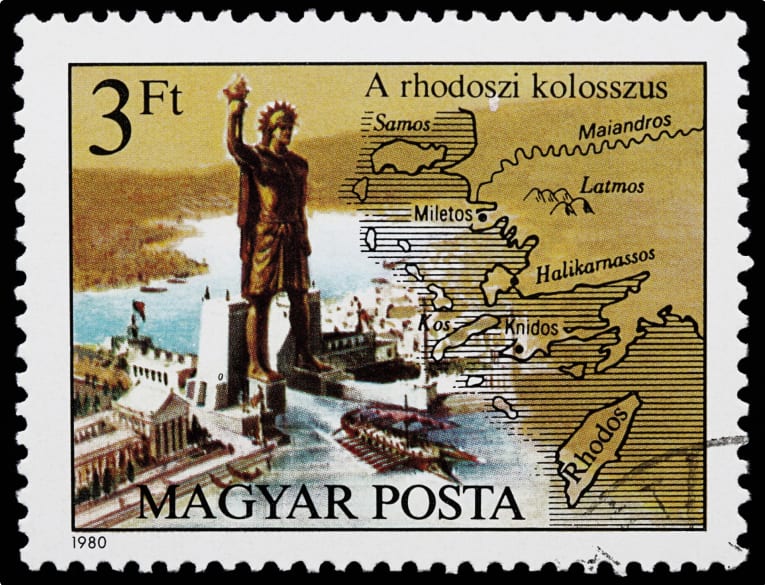
With Demetrius’ attempt to capture the island having failed, Rhodes would go on to enjoy a period of great maritime and commercial success. So much so that a web of Rhodian bankers existed across the eastern and central Mediterranean, advancing credit and oiling the commercial networks of the Mediterranean. As such, Rhodian coinage circulated widely, accepted by towns and islands in the Aegean.
So much of Rhodes success was due to its dominance of the commercial traffic of Alexandria, where its ships were able to reach in three or four days when the wind was behind them. As such, the Rhodians virtually controlled the grain trade, shifting most of the Egyptian grain that was despatched northwards.
And it was from Rhodes that large quantities of wine arrived in Egypt. The physical evidence for this trade survives in the stamped handles of over 100,000 Rhodian amphorae discovered in and around Alexandria. Moreover, the two great cities also exchanged culture and intellectual thought, with the masters of philosophy, science, literature, and rhetoric of this era moving between the cities.
Despite their ties though, the Rhodians dedicated themselves to a policy of preserving a balance of power between the Antigonids, Seleucids, and Ptolemies. Thus, they were even willing to support the Seleucids if the Egyptian navy threatened to dominate the eastern Mediterranean. In addition, the Rhodian took it upon themselves to clear the seas of pirates, whose appearance was the inevitable consequence of the decline of Athenian sea power.
Roman Years
The Romans began to interfere more noticeably in the affairs of Greece and the Eastern Mediterranean from the end of the 3rd century BCE. Then from 168 BCE, they began to treat the Rhodians not as allies and valued trading partners but as a satellite, expecting Rhodes to place its fleet at the service of the Roman Empire in its conflict with the kings of Macedon.
In retaliation against Rhodes’ lack of enthusiasm, the Romans made the island of Delos a free port, repopulating it with a merchant community. This dragged business away from Rhodes, which experienced a sharp decline. As such, the Rhodians were compelled to sign a treaty to become an ally of Rome and thus part of the empire.
Even so, the Rhodians refused to assist the Roman general Cassius against his enemies following the assassination of Julius Caesar. So, Cassius attacked and destroyed a large part of the island in 43 BCE, looting most of its treasures.
Tour of Rhodes

Odyssey Traveller conducts a four-day Rhodes private tour as part of our Eastern Mediterranean Islands Tour for mature and senior travellers. Over the course of 21 days on this escorted tour on the Mediterranean Sea, you can experience an exhilarating mix of culture and history on four significant Greek Islands.
Visit one of the Greek isles, beautiful Santorini, which contains a remnant of an ancient civilisation disrupted by volcanic action. On Crete, you explore the home of the Minoan civilisation aided by important archaeological finds at Knossos and Phaistos. You also explore Rhodes, inhabited since the Stone Age, as well as the island of Cyprus, where east meets west.
Voyage into antiquity, stroll through unique landscapes and scenery, taste local cuisine, and discover the Eastern Mediterranean’s ancient ruins and natural wonders all on our tour of the Eastern Mediterranean Islands.
A selection of professional guides joins your Program Leader or tour manager on this trip to share their knowledge of each island visited. As you explore these islands and learn about the cradle of Western civilisation, ancient cultures and history come to life. You take local ferries between the islands and spend an extended time exploring the many wonders that each has to offer.
Articles on Greece published by Odyssey Traveller.
- Questions About Greece
- Dawn of Greek Civilisation
- Exploring Ancient Cities
- Dawn of Greek Civilisation
- Greek Islands & Cyprus
- Bronze Age Civilisations of the Eastern Mediterranean Islands
External articles to assist you on your visit to Greece.
Related Tours
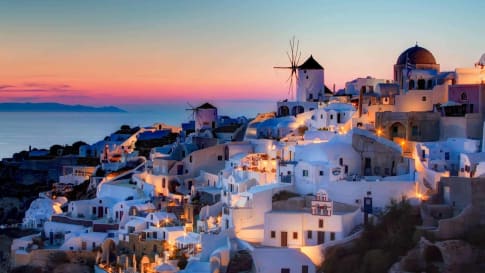
21 days
Apr, OctSantorini, Crete and Cyprus Small Group Tour | Eastern Mediterranean Islands Tour
Visiting Cyprus, Greece
A fascinating small group tour, with an amazing mix of culture and history – the islands of Greece, the cradle of Western civilisation, where traces of a centuries-old history exists. Visit Santorini, a remnant of a volcanic era; Crete, the home of the Minoan civilisation with important archaeological finds at Knossos and Phaistos. Rhodes, inhabited since the Stone Age; and venture further to the island of Cyprus, where east meets west.
From A$17,545 AUD
View Tour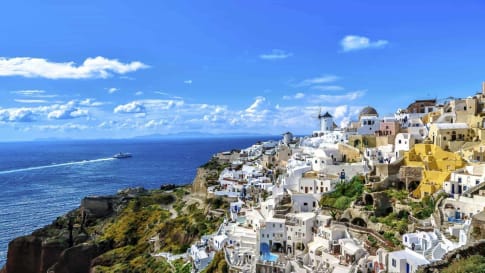
10 days
Apr, Oct, MarSantorini - Crete: Eastern-Mediterranean Islands Short tour
Visiting Greece
Join our small group short tour of the Eastern Mediterranean. Spend 10 days in Greece for a glimpse of the land of great philosophers, myths, and legends. We will learn about the culture and heritage of modern Greece while travelling from Athens to Santorini and over to Crete.
From A$9,375 AUD
View Tour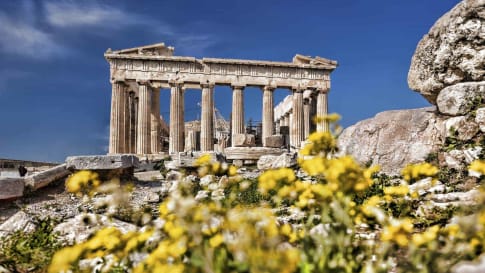
22 days
Apr, Sep, MayGreece small group escorted history tour
Visiting Greece
Our 22 day small group tour explores the land of great philosophers, myths, and legends. We will learn about the culture and heritage of modern Greece whilst exploring and learning Athens, which only found independence in its uprising from the Ottoman Empire in the 19th century.
From A$14,145 AUD
View Tour
18 days
Mar, NovWalking in Greece
Visiting Greece
Visits to UNESCO World Heritage Sites introduced by local guides feature on this walking tour for mature couple and single travellers. The days itineraries to selected destinations provide authentic experiences in the remote parts of Greece. A single supplement is charged for solo travelers on these small group journeys.
From A$11,715 AUD
View TourRelated Articles
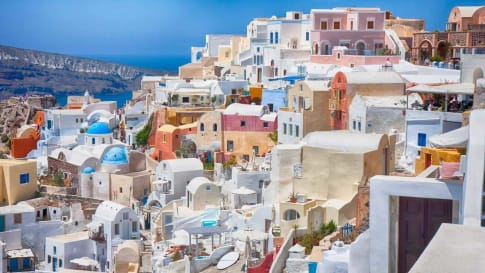
Bronze age civilisations of the Eastern Mediterranean Islands
Bronze age civilisations of the Eastern Mediterranean Islands As you explore these islands and learn about the cradle of Western civilisation, ancient cultures and history will come to life. Visit magical Santorini, which contains a…
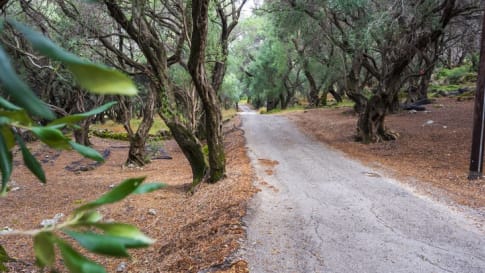
Corfu, Greece
Corfu differs to much of the rest of Greece, with notable limited archaeological sites but an abundant mixture of forts, medieval castles, palaces, Greek orthodox churches, and monuments.
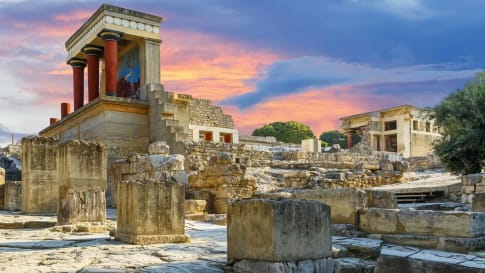
Crete History for Travellers
Crete History for Travellers Crete is one of the most beautiful and traditional regions of Greece. Although Cretans have fought generations of invaders, they are a people whose courtesy and hospitality is legendary. These lands…
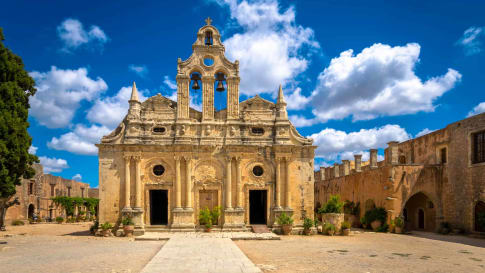
Crete history; a guide for small group tours
Crete, the largest of the Greek islands, stands as the southernmost border of Greece. Its position sees it as acting as something of a communication bridge between the African continent and Europe.
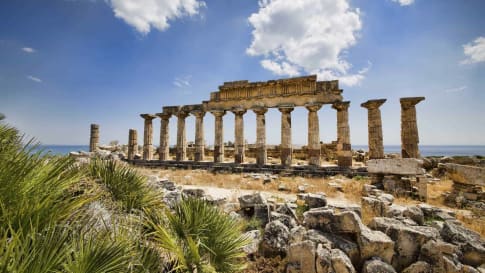
Dawn of Greek Civilization: The Definitive Guide for Travellers
The Beginning of Human Civilisation Ancient Greece stands out as a pivotal civilization that significantly influenced human progress. The period between 800 B.C. and 500 B.C., considered Ancient Greece, marked a flourishing era in various…

Empires Crossing the Mediterranean: 1130-1300
As a sea connecting continents and stretching from the Atlantic Ocean in the west to Asia in the east, the Mediterranean has for centuries been a centre of trade and exploration.
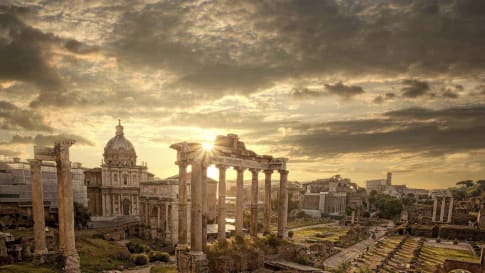
Exploring Ancient Cities
Exploring Ancient Cities What can we learn from exploring the ancient world? What do we take away from the wealth of knowledge uncovered as archaeologists investigate the ruins of past societies, while social scientists speculate…

Greek Islands and Cyprus: Discovering the East Mediterranean
The Greek Islands and Cyprus are teeming with opportunities to visit archaeological sites and historic locations, while getting to know the region’s marvellous contemporary culture. Following the financial crisis, Greece became known as the centre…

Questions about Greece guide for Senior travellers.
Explore and learn about on a Seniors small group tour to Greece and its islands. A place of pastoral, cultural and historic settlement. Visit Epidaurus, Rhodes and the Greek islands or take a walking tour.
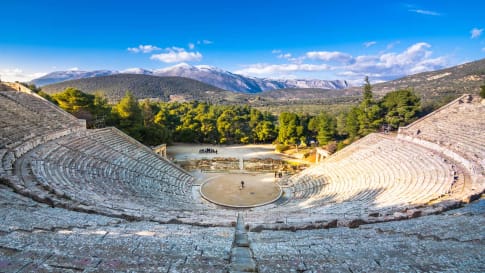
The Peloponnese, Greece
This article traces the Peponnese peninsula history from the Bronze Age, through classical antiquity, the Byzantine and Ottoman empires, and finally modern Greek independence.
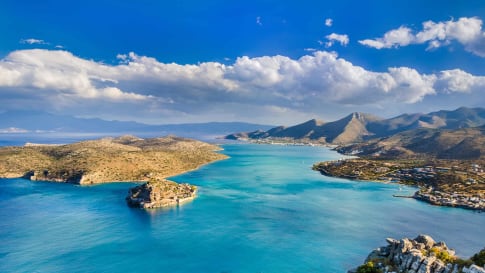
Understanding Spinalonga, Crete.
This peninsula or island is visited as part of a small group tour for mature and senior travellers on the Eastern Mediterranean or Crete programs designed for couples or solo travellers. You can also read more about the history of Crete.
